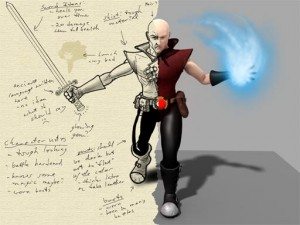
Reecius here to discuss a topic that touches the heart of many a gamer: making your own game! Manufacturing is a critical part of the process and I want to share some firsthand experience on that topic!
Admit it, you’ve thought about making a game, yourself, at least when you were a youngster. We all have, we love games and it’s only natural to at least consider designing one yourself. I know I have thought about it many times, myself! As a kid, I had notebooks full with back story, art and rules for my own miniatures games!
Well, I am here to give you some cool information on how the manufacturing side of it works.
What qualifies me to say anything at all on the topic? I just returned from a trip to China where we got the wheels turning on making our very own gaming product, the Mega Mat!
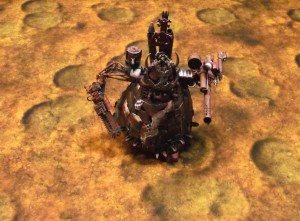
You can see (and hopefully support!) our KickStarter here.
The Mega Mat is a full color, ready to play out of the box series of themed 4’x6′ tabletop gaming mats for use with miniatures games! We have two Mega Mat designs already through the prototype phase and in our store–‘Grassy Plains’ and ‘Blast Zone!’ With stretch goals, we hope to unlock our ‘Urban Combat’ (City Themed Mega Mat), ‘Alpine’ (Snow themed Mega Mat) and the ‘Barren Wasteland’ (Desert/Post Apocalyptic Mega Mat) designs, and eventually all 5 in 4’x4′ Mega Mat versions as well!
Shameless plug? Yes. But we want our product to be a success and if you want to succeed you have to use every resource you have! That’s the first tip I have to share =) But, I have more, so read on!
First of all, why produce in China and not the USA/Canada/Europe? I love the good old US of A (as most of you reading this doubtlessly love your respective counties, too), so this was a concern to me. However, after doing research (and by no means is my knowledge on this topic comprehensive, this is based off my personal experiences), it is not only the labor costs that are such a big discrepancy between the USA and China (and there is a HUGE difference in that regard, 5 to 20 times as much domestically vs. China or more) but also the volume requirements.
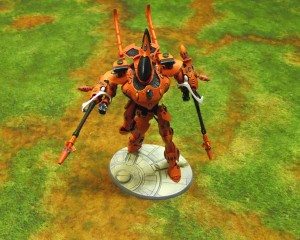
China specializes in contract manufacturing. They will complete a smaller quantity of units in a manufacturing run and they do not push as hard for a long term commitment. As an example to illustrate this point, in China you could say, produce 1,000-2,000 units of a given product, whereas in the USA a manufacturer may ask you to produce 10,000….per month! And ask for a year long contract.
Obviously for our industry that is simply unrealistic.

So, not only would it cost more to get the project done per unit (and typically raw materials are cheaper in China, too) but they want you to commit to more units. As gamers are really, really price sensitive, they wouldn’t want to pay double to triple what they are used to paying for the exact same thing.
Design work is also critically important. Obviously, you need someone with the artistic ability and technical know-how to actually design your product to a high level of quality. Our team has just such an individual, Doug Johnson, who has over 10 years in professional design and 3D modeling behind him. If you are making models, not only do you need a beautiful design, but the knowledge of how to break that up into parts that are easily assembled and most efficiently take up space on a sprue. There’s a big difference between GW plastics and their competitors and that is as much experience as technical advantage.

You also have to consider how the design will interact with a mold and how the final product will come out of the mold as plastic injection molding can be a fickle process if you don’t know what you are doing. I imagine paying the very steep costs to make steel molds (many, many thousands of dollars–even in China–for a single model kit) and then finding out the plastic sprue comes out not the way you want, would be more than a little disappointing.
Producing in China though, opens up a whole slew of new concerns. For one, obviously, the language barrier. That is a BIG barrier. Trying to communicate detailed, complicated design instructions, particularly for something they are not familiar with making, can be incredibly challenging. Any errors in communication, even slight, can be disastrous.
For example, while discussing the production ramifications for our Mega Mat, the manufacturer told us there could be a variance of up to 5cm per mat (1.9685″), which was unacceptable. We were about to walk away from the negotiating table when they realized they had actually meant 5mm (0.1575″) which is hardly noticeable (and some variance is unavoidable in the manufacturing process). Huge difference! A simple translation error and you can imagine how big of an impact that would have on your project.
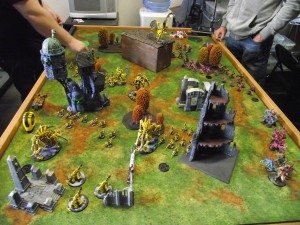
You really, really need someone on your team that speaks Mandarin (or Cantonese or whatever they speak at the factory). Luckily, we have that in one of our partners, Todd, who lives in China and speaks the language. That makes a massive difference, and I cannot stress that enough.
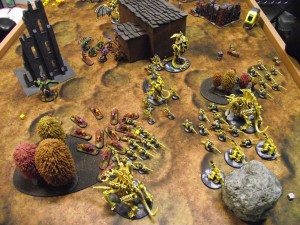
That also ties into the other point: quality control.
You must, must, must be able to ensure quality control. It would be utterly disastrous if you were to go through the design, prototyping, and manufacturing phases of bringing a product from concept to market (which is very expensive, thousands to tens of thousands for even a simple project), spend the thousands of dollars involved in shipping the product over the Pacific, setting up a business (if you don’t already have one), bonds for importing, etc. all to open the container and see a product that is not what you thought you were getting! You would be out of business before selling a single unit. Imagine if you had run a KickStarter and used other people’s money, they trusting your ability to deliver, only to get a product that was totally wrong? It would be just rotten.
That is another advantage of having a partner there in China to ensure our Mega Mat products are all at the quality level we demand.
It also behooves you to do business the old fashioned way: face to face. Yes, we live in a digital world where we can reach out to nearly any point in the world from any other point, but there simply is no substitute for going and meeting someone, shaking their hand, and seeing how they do business.
That is exactly what we did, and we went to just shy of a dozen factories before we decided on which one we wanted to work with. They were extremely professional, their factory was efficiently run and clean, and they dealt fairly (You must be prepared to go in ready to fight for the price you want to pay, every business deal in China is a negotiation). That cultural barrier, one of a great many, is another hurdle you must be prepared to get over.
The other benefit to being there is that you can often see a prototype of your product and hold it your hands. There is no substitute for that. That is exactly what we did with our Mega Mat line and I brought two of them back to the States with me where our customers have been having a blast playing on them!
That is a brief rundown on what it takes to manufacture in China and maybe bring your dream of designing a game to life! At least one aspect of it! Then you have to think about the million other factors such as marketing, warehousing, distribution, sales, customer service, competing products, etc. etc. etc. Haha, it is no easy task to be sure, but hopefully you found this bit of firsthand experience useful!
Again, please check out and support our Mega Mat KickStarter if you think it’s a worthy product!
*Not to be confused with other Mega Mat products. This product will have a different name after funding of the KickStarter and upon delivery of the product.

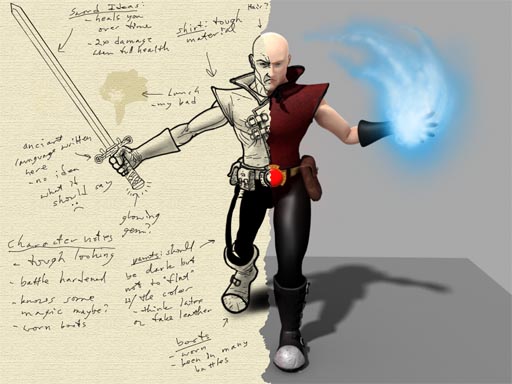

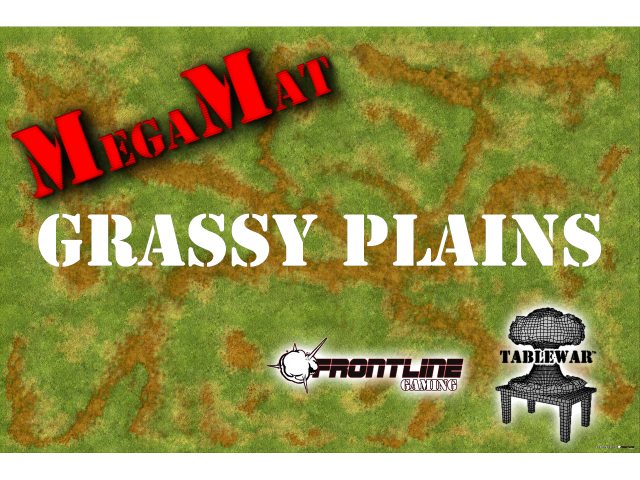
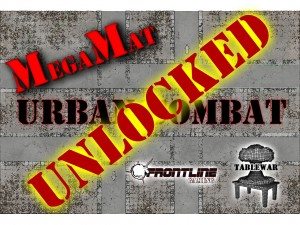
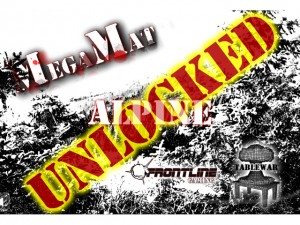

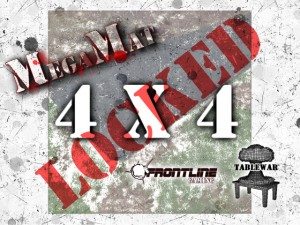
One of the most interesting posts yet here. Very nice with a good idea. Since you are most likely aiming for GW-game players (largest gaming group), why not forest bases in the same package? I notice that the 40k in the pics above with nids in it uses a “normal” forest base. Why not one in the same type as the rest of the board? Perhaps price would be an issue?
Do you mean custom bases?
Not exactly, my point being that with the gaming mat, people will still make their own base for area terrain which mean that there will be huge difference on the table. One could of course buy two mats but I don’t know which would be the cheapest.
Most likely the production of the mats will have some kind of waste where some part of the mat will be making the total mat useless. If you can get those for a reduced price from your producer you could, in theory, cut those and sell them as bases for area terrain with a much better marginal.
My company buy a lot from China and even from there, if you can find a way to handle and make usage of their waste you will have much more profit of increase the value of the gaming mat by bringing wood bases along.
That is a good idea on using the waste and we will definitely look into that, actually. Thanks for the suggestion.
Wow Reecius you couldn’t have better timing. I’ve been in the market for a 4×6 wargaming mat for a while and most of the options that used to be available are now OOP, like the mat you guys use for most of your batreps. I also really love the “mouse pad” style mats that are used in trading card games and I really like that you guys chose this medium over the flocked style mat.
I will definitely be supporting you guys and pledging for a desert mat.
Thank you, sir! Glad you like it!